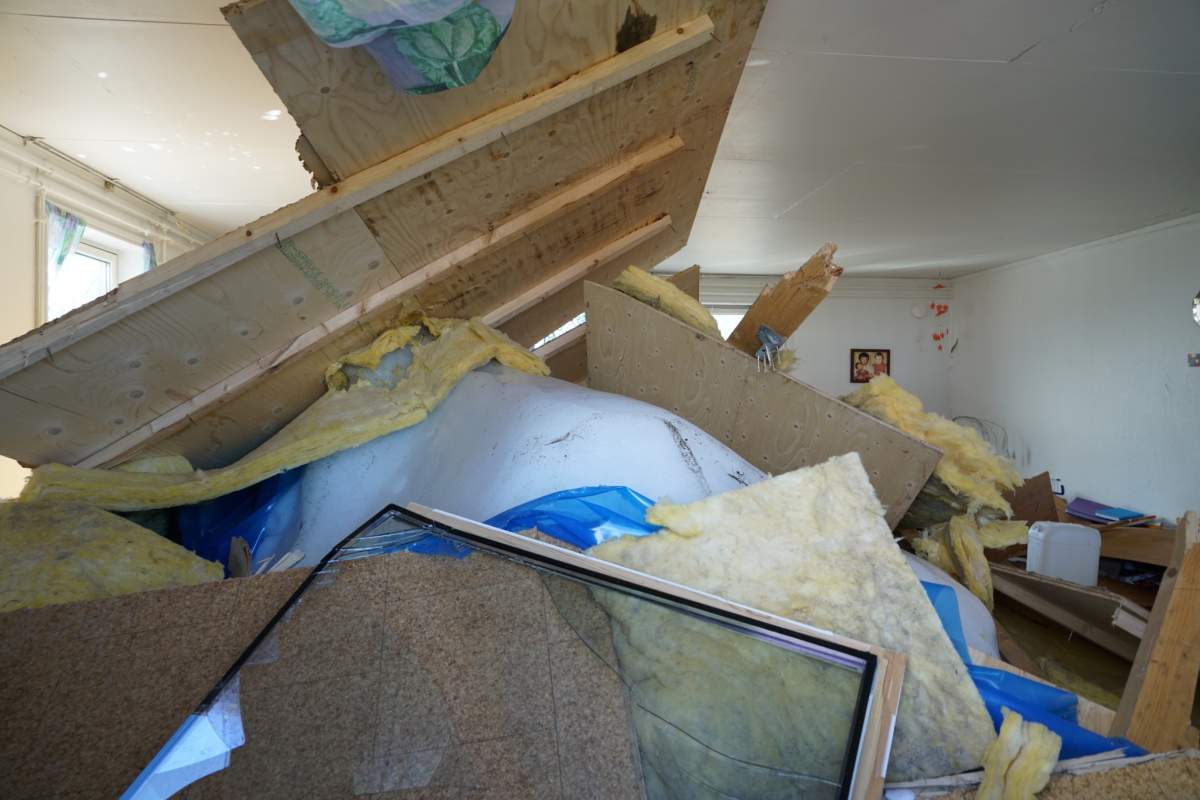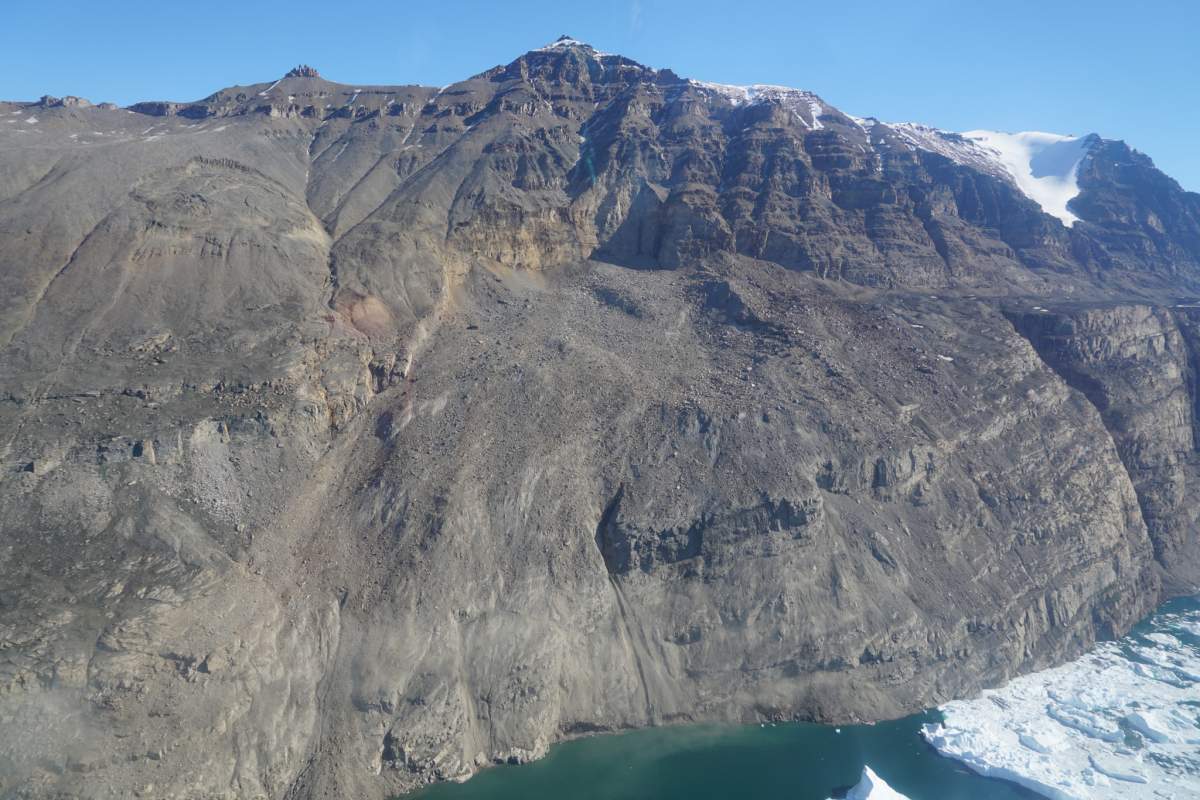June 17, 2017.

It was the middle of the night in Nuugatsiaq, Greenland when a destructive force was unleashed in Karrat Fjord, about 30 kilometres away.
Coverage of tsunamis on Globalnews.ca:
There, a portion of hillside fell about a kilometre to the ocean below, triggering a tsunami that reached a height of over 90 meters — almost as high as London’s Big Ben (96 meters), and well above the runup of the 2011 tsunami in Japan.
The tsunami took about five minutes to reach Nuugaatsiaq, a fishing village of about 100 people.
It killed four people and washed away 11 homes. It also broke off parts of a nearby glacier and washed icebergs ashore.
READ MORE: Greenland hit by tsunami, four people missing
These were the findings of a team of researchers who visited the area in early July, who had hoped to capture the aftermath before much of it melted.
The results of their research, which was supported by the National Science Foundation (NSF) and the Geotechnical Extreme Events Reconnaissance (GEER) Association, were released last week.

Get daily National news
The team, led by Georgia Tech Prof. Hermann Fritz, visited the site of the tsunami so that they could “understand why four people were swept out to sea while other residents were able to avoid the danger and record video of the tsunami coming ashore,” according to a news release.
“At these depths, tsunami waves travel about the length of a football field every second, so the tsunami wave arrived very fast,” Fritz said.
“The combination of a small earthquake from the plunge of the landslide, the sound, and unusual iceberg motion in the fjord prompted a spontaneous self-evacuation.”
Pictures captured on the trip show homes decimated by tsunami activity.
One picture showed a piece of ice that had broken through a home.
Researchers believe the tsunami lifted the residence off its foundation and dropped it on an iceberg.
The tsunami reminded Fritz of a landslide-triggered event that happened in Lituya Bay, Alaska in 1958. At heights of over 100 meters, that was the “highest tsunami runup in recorded history.”
This one happened in deeper water. But it was still high enough to rank in the top five tsunami run-up heights ever recorded in fjords.
READ MORE: Tsunami hits Japan after earthquake strikes off Fukushima
The research could prove crucial — especially as another tsunami could soon happen in the very same place.
While a landslide already happened in Karrat Fjord, there remains an unstable hillside adjacent to where it took place.
It’s dangerous enough that three villages remain evacuated.
“The second adjacent landslide remains a hazard, with an open back scarp and wide cracks a thousand meters above the water,” Fritz said in a news release.
“We had an unusual opportunity to record the aftermath of one landslide and tsunami and the baseline of a potential future event.”











Comments